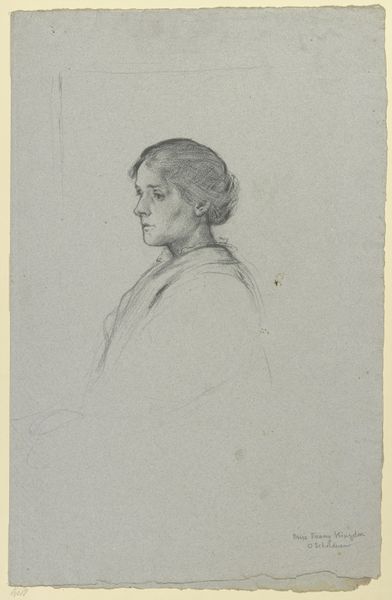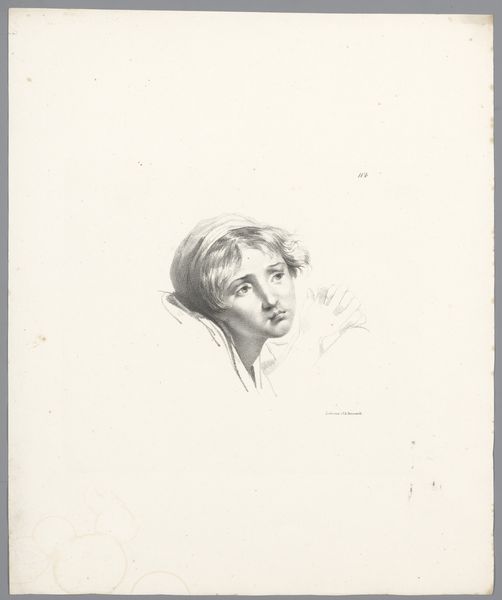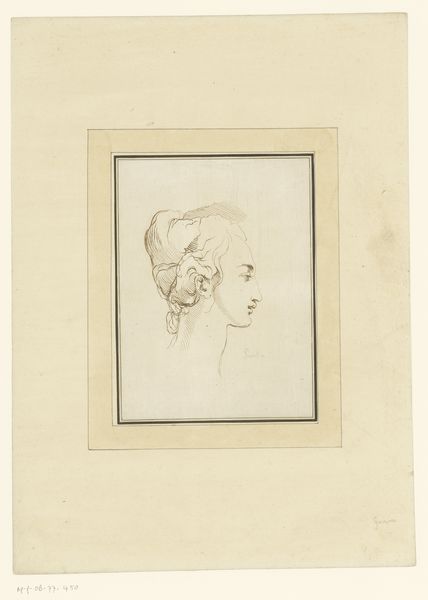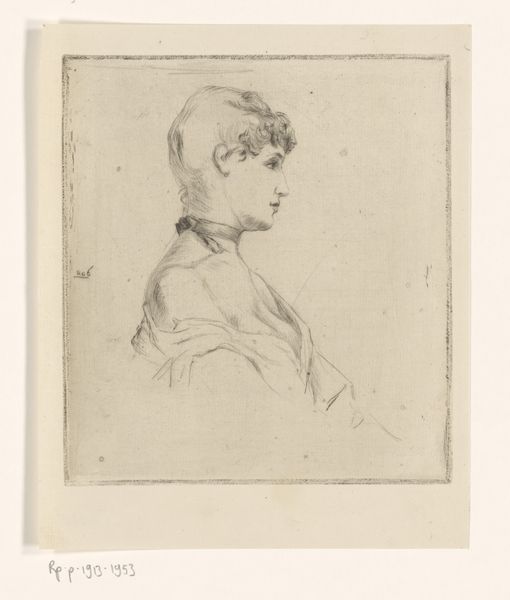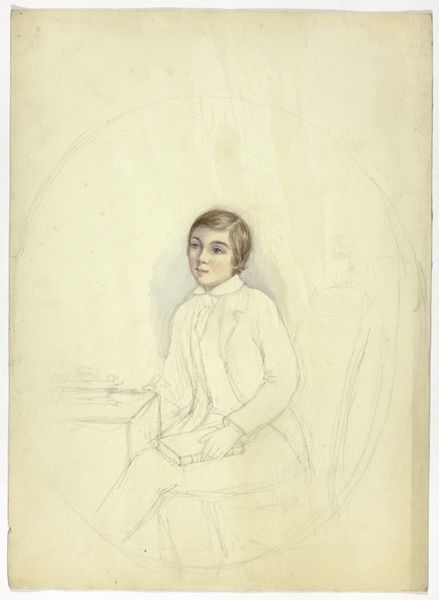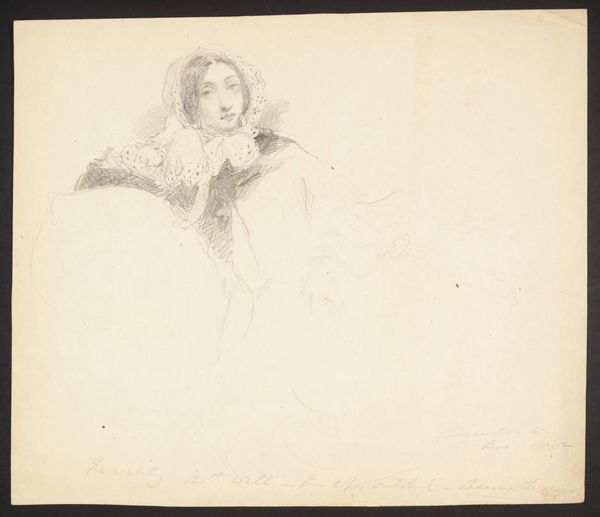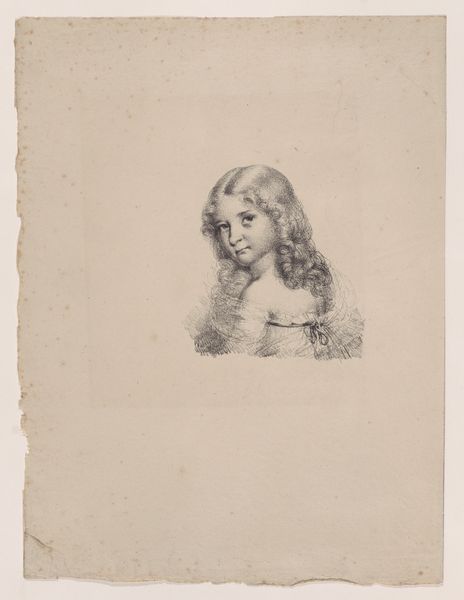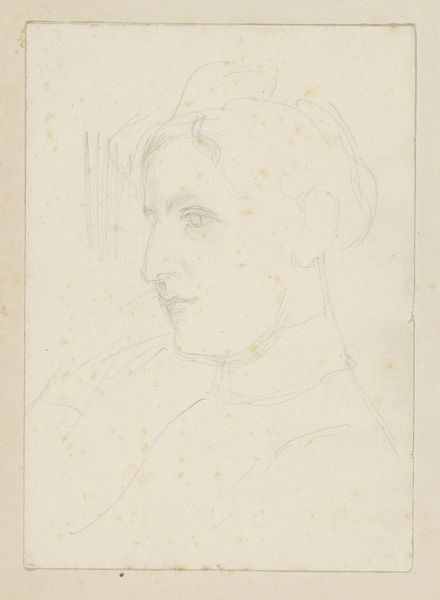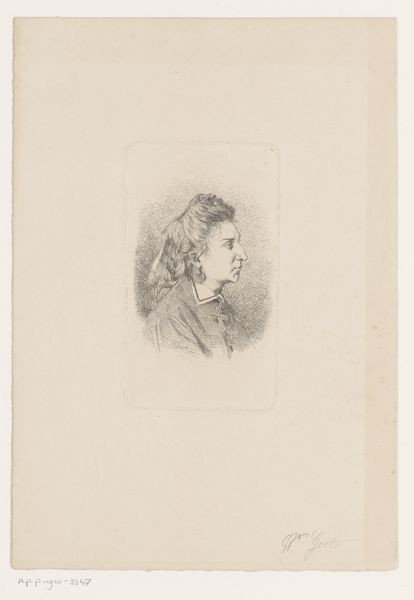
drawing, paper, graphite
#
portrait
#
drawing
#
pencil sketch
#
figuration
#
paper
#
graphite
#
academic-art
#
watercolor
Dimensions: 258 mm × 362 mm
Copyright: Public Domain
Editor: Here we have an undated piece called "Study for Female Portrait," a drawing made with graphite on paper currently residing at The Art Institute of Chicago. There's something delicate and serene about the sketch, yet unfinished. How do you interpret this work? Curator: It's interesting you note that perceived serenity. Looking at it through a lens of feminist art history, I wonder if it hints at the constrained roles women occupied, even in art. Is this serene or suppressed? Think about the very act of “study”—an incomplete rendering, almost like a preliminary to something deemed "more important". How does this connect to larger historical patterns of women’s contributions being minimized or seen as preparatory to male counterparts? Editor: That's a perspective I hadn't considered. I initially focused on the aesthetic, the soft lines, the classical composition. Curator: Exactly. It lures us in with a certain visual language of tradition and perhaps, expectation. Yet, the unfinished quality subverts it. It invites us to question not just *what* we're seeing but *why* it’s presented in this incomplete form. This tension between beauty and incompleteness could reflect women’s struggle for visibility within artistic and social structures. Who decided it was not to be finished and exhibited as a 'main' piece of work? Editor: So you’re suggesting that the artwork, consciously or unconsciously, engages with the societal constraints placed on women artists? Curator: Precisely. Consider, too, the lack of details in the clothing, the emphasis on the face. Is the drawing prioritizing inner character or conforming to the demands of portraiture expected at the time? Editor: It’s fascinating to think about the subtle ways these power dynamics can manifest in art. I initially viewed this piece through an art historical context; now I realize there’s more to unpack! Curator: Indeed. Engaging with intersectional critiques – examining the confluence of gender, class, and societal expectations – allows us to see historical artworks like this drawing anew. Editor: Thank you. Now I will remember that all art carries a lot of baggage, it seems! Curator: Hopefully you now feel like it also provides exciting pathways for understanding our culture!
Comments
No comments
Be the first to comment and join the conversation on the ultimate creative platform.
